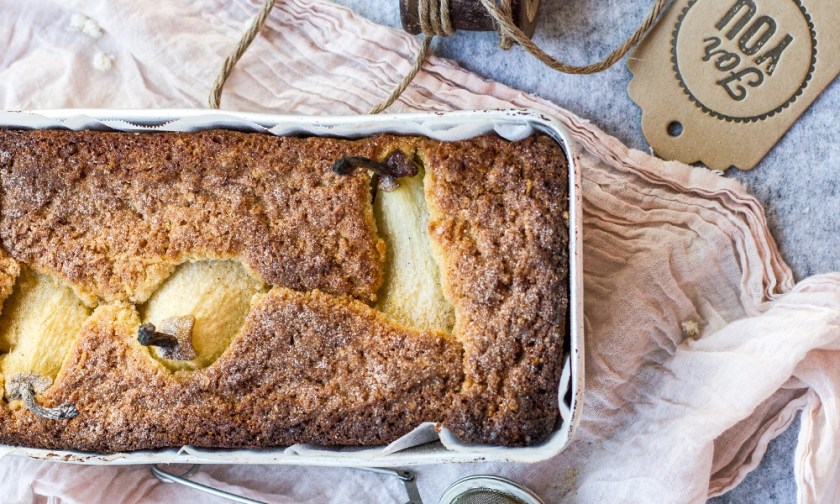Growing up in a home filled with delicious, whole-food, Australian health-coach Martyna Angell learnt her culinary skills by spending time in the kitchen with her parents, who are both avid cooks.
But for a short spell in her early twenties, healthy eating took a back-seat. Within a year, Martyna had eaten herself to the verge of obesity. That’s when she decided enough was enough.
Looking to make permanent changes, she went back to basics, eating whole-foods she knew agreed with her body. In this transitional phase, she began studying at Integrative Nutrition School. It was there she became interested in the concept of bio-individuality – and took back control of her cravings, weight and life.

As the name suggests, bio-individuality accounts for differences in human biological makeup and understands that no diet suits everyone. Martyna talks to SPA+CLINIC about the concept and shares a recipe that’s entirely customisable for a host of dietary requirements.
Could you elaborate on bio-individuality food philosophy?
I believe that we are all different and no single diet fits everyone the same – that’s bio-individuality in a nutshell. That’s how our family eats. It focusses on promoting overall wellbeing through an holistic but individualised approach.
Come to think of it, the way my parents ate was very similar – each enjoying specific ratios of macro-nutrients and foods slightly differently to the other.
While I eat a mostly paleo-inspired diet my Mum thrives on bread, rice and pasta. So, I adapt my cooking to all of our needs – it’s quite simple once you get the hang of it.
The recipes on my website, and in my cookbook, allow the individual to easily customise ingredients too.
Where does it fit in among the plenitude of dietary theories available to consumers?
Most of the modern dietary theories agree that eating a diet based around real food is a good place to start.
Unfortunately, for a regular supermarket shopper who is bombarded with colourful catalogues filled with very little but junk, at half price, the choice is not as simple as it may seem.
There are over 1,000 diets out there. The other day I was reading an article about a breatharian couple, who survive only on the smallest amount of food – a handful of portions – per week.
There are people who eat just bananas and do okay. There are others who thrive on meat. I like that there are different people who have figured out what works for them.
How does one figure out their own bio-individuality – that is, the style of eating that best suits them?
The best way to figure out what foods are best for your body is to eliminate processed food for 2-3 weeks then continue eating real foods and observe, observe, observe.
Keep a food diary and observe how you feel after certain foods, how your skin reacts, how you may become bloated after some foods but not others.
For me, breakouts become an issue if I consume more than a quarter of a cup of milk in a day, however, butter or yoghurt don’t have the same effect.
So, just because your body may gently react to a certain food it does not mean you should eliminate the entire group. Re-test the theory and eliminate or limit intake.
Recipe: Coconut and Pear Loaf

“The flavours of this perfect-for-autumn loaf remind me a little of apple crumble,” Says Martyna. “It’s wholesome and quick to make and great with ice-cream.”
“Try to use smaller pears for this cake so that that the sides of the loaf that envelop the fruit have enough room to bind and hold together – the recipe is vegetarian and can be customised gluten-free, dairy-free, lactose free and/or nut-free.”
Ingredients (serves 6-8)
3 semi-ripe pears (I use Beurre Bosc)
1 cup wholemeal plain flour or almond meal
3 teaspoons baking powder
1⁄2 cup rolled oats or 2⁄3 cup quinoa flakes
1⁄2 cup shredded coconut
1⁄2 cup unrefined demerara sugar, plus 1 teaspoon extra to serve
2 eggs
1⁄2 cup milk of your choice
1⁄2 cup macadamia oil or melted coconut oil
Method:
- Preheat oven to 180°C (160°C fan-forced).
- Line a 23cm x 13cm loaf tin with baking paper. Peel pears, leaving the stems attached, place them along with the peels in a saucepan and cover with water. Bring to a boil then reduce heat and simmer gently for 5 minutes.
- Remove from heat and leave in the pot to poach for 15 minutes. Transfer to a colander to cool slightly. Reserve the water and peels, cool and blend to make a wonderful pear drink that can be served warm or chilled.
- Meanwhile, in a large bowl, mix flour or almond meal, baking powder, oats or quinoa flakes, coconut and sugar.
- In a measuring jug, whisk together eggs, milk and oil. Pour egg mixture into dry ingredients and mix well with a wooden spoon. Pour batter into prepared tin.
- Press pears into the batter, stem-side up.
- Bake for 45 minutes, or until the cake has turned golden brown and a skewer inserted in the cake comes out clean.
- Cool on a wire rack completely before serving slices with a little extra sugar on top. If you would like to serve the cake warm, note that it might be a little crumbly.

Health coach, blogger and cookbook author, Martyna Angell, has worked as a recipe developer for a number of local and international publishers and brands. She is a regular columnist for the Australian Nourish magazine. Her website and cookbook, The Wholesome Cook (published by Harlequin) offer a mix of wholefood classics which are based around real food and can be adapted to create options for various dietary needs. Recipe is extracted from The Wholesome Cook by Martyna Angela.



